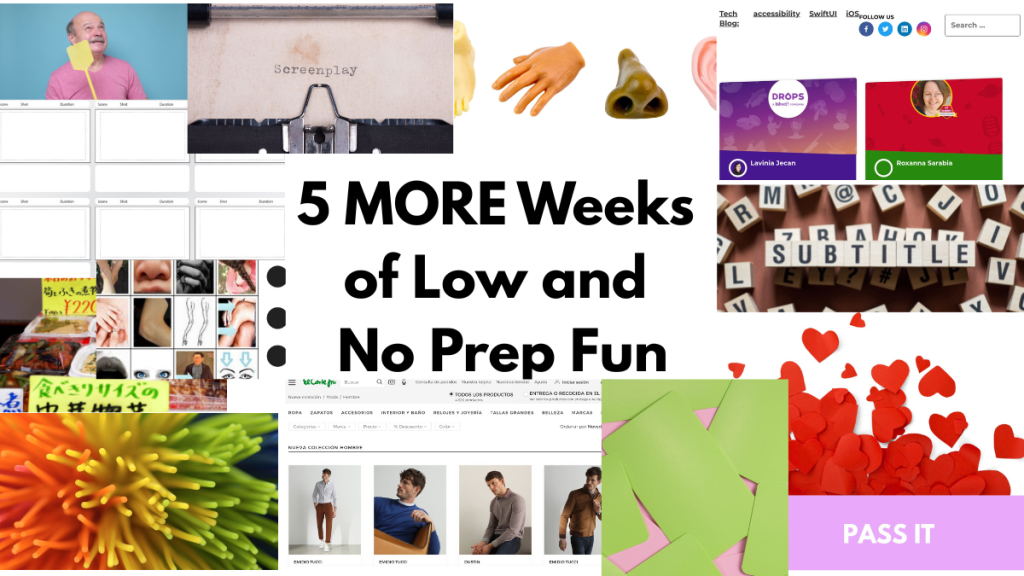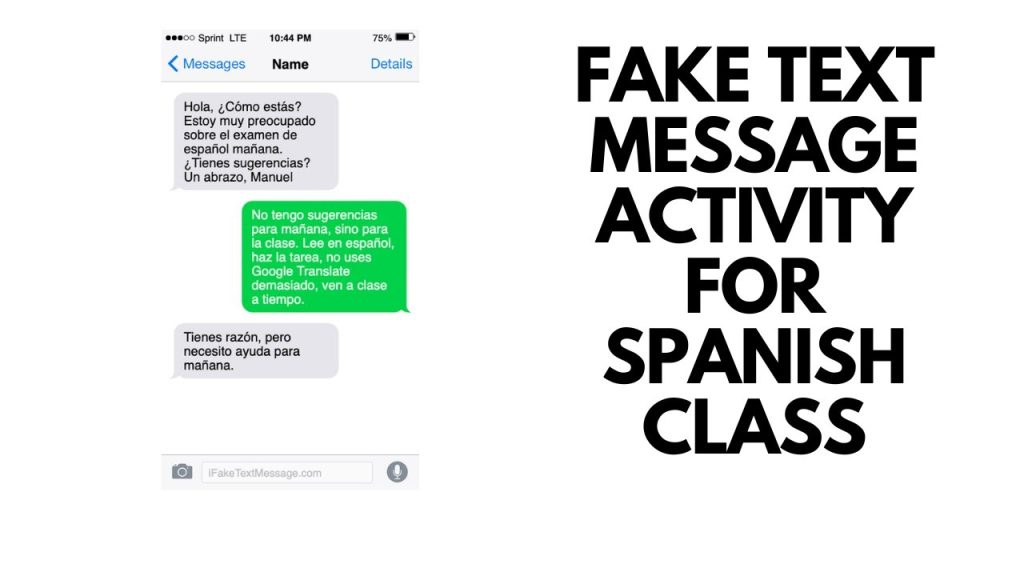In the short video “Learning Spanish Narration with Chat Mats” I share a classroom-tested activity that helps learners master narrating in the past. Chat mats are simple, repeatable, and perfect for building confidence with the preterite and the imperfect through short, guided conversations and presentations.
Why chat mats work
Chat mats turn abstract grammar into meaningful communication. Instead of drilling conjugations in isolation, students use the past tenses to tell real, personal stories. The repetition and low-stakes format help learners internalise narrative structures while practising natural flow and vocabulary.
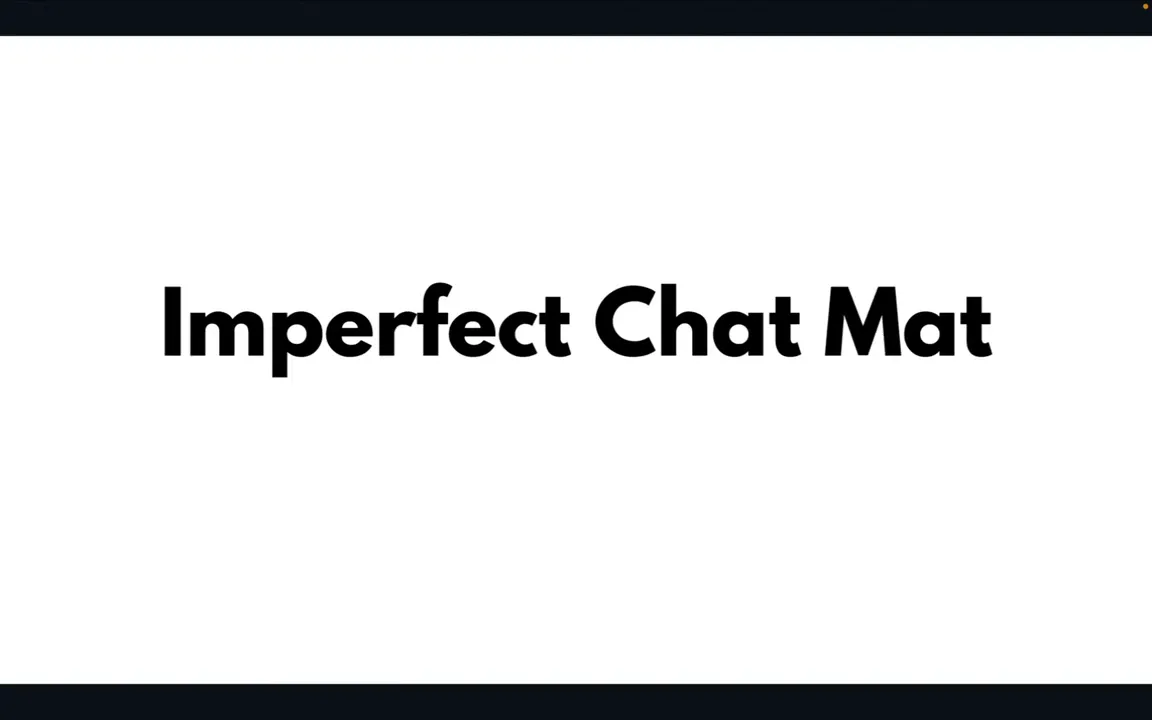
How I introduce chat mats
I begin with a short presentation about myself that models the target language. I narrate past events and habits so students can hear both the preterite and the imperfect in context. After modelling, I give students the same set of guided questions and compact answer starters so they can reply about themselves.
One of my favorite activities to get people who are learning Spanish to be able to master narrating in the past are using chat mats.
Step-by-step
- Present a short, personal example in the past (model both tenses).
- Provide a printable chat mat with guided questions and sentence starters.
- Let students answer about themselves in pairs or small groups.
- Circulate, correct gently, and note useful language on the board.
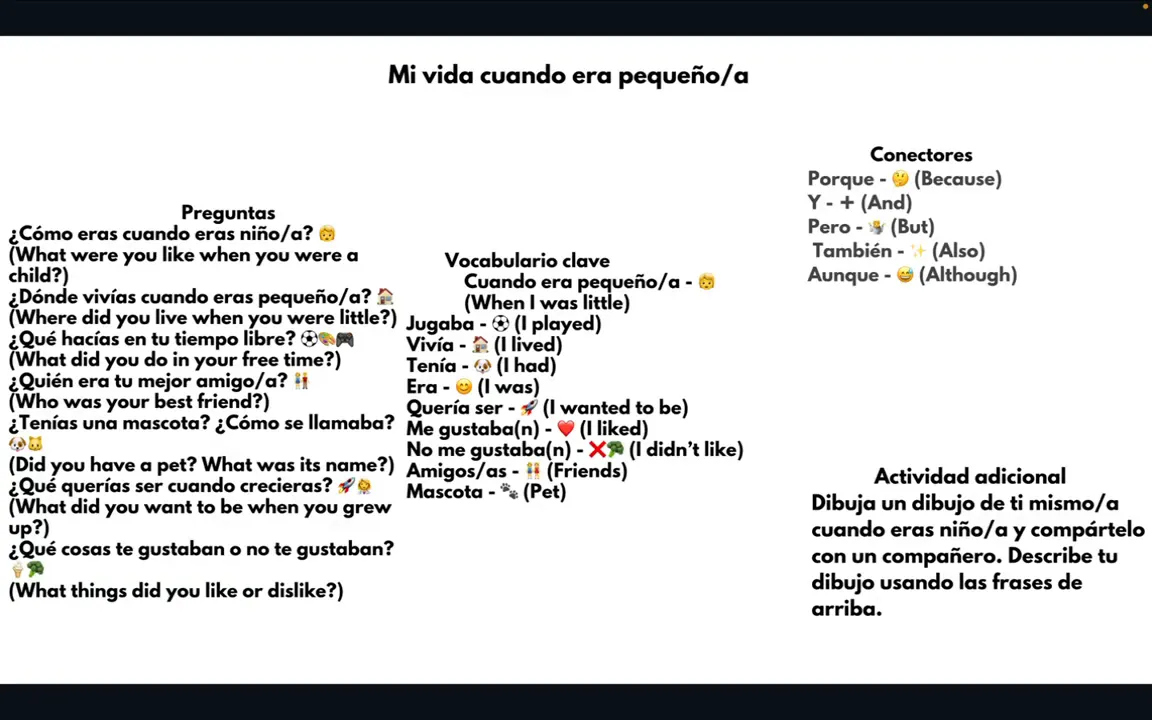
Daily practice and warm-ups
Chat mats make excellent warm-ups. Use them repeatedly over several days to build fluency. Short daily interactions—two or three minutes per student pair—create a lot of production time across a week, and they’re a natural way to review vocabulary and past-tense forms.
Classroom tips
- Rotate partners so students hear a variety of answers and accents.
- Limit corrections during quick chats; focus on communication.
- Collect common errors and teach mini-lessons after a round of chats.
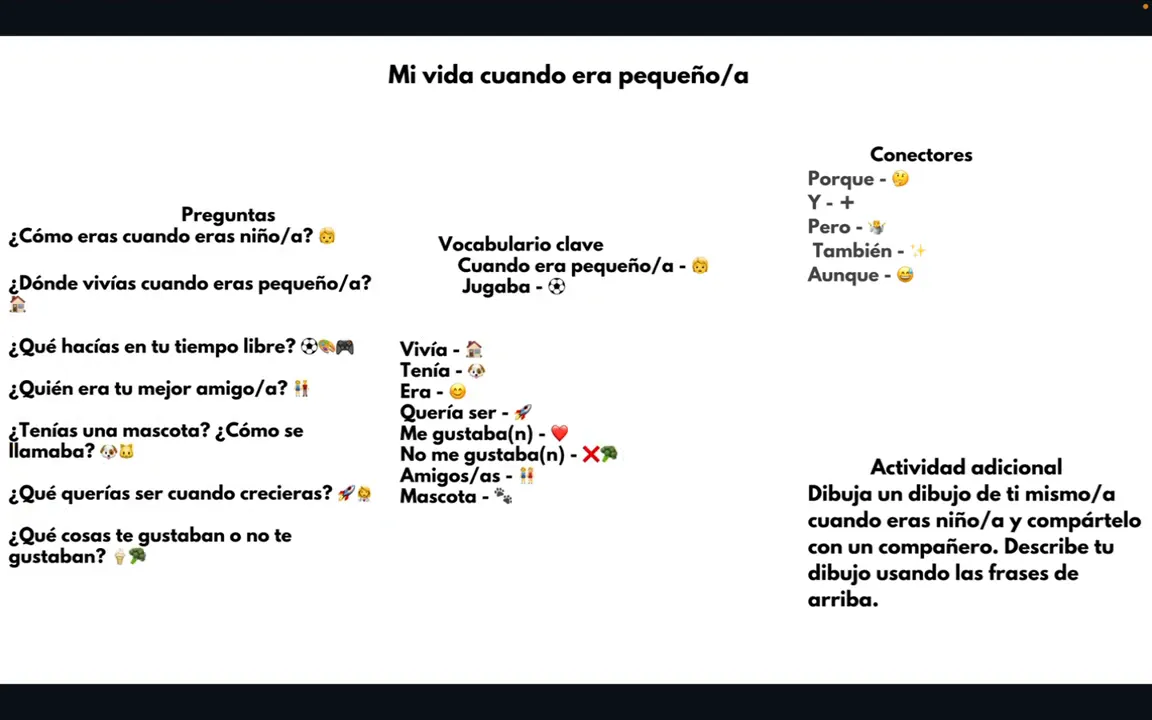
Extension: presentations comparing past and present
After a few days of chat mats, assign a short presentation where students compare life when they were younger to life now. This is a perfect prompt to practise the imperfect to describe habitual actions or background information (e.g., “Cuando era pequeño/a, jugaba…”) and the preterite for specific events (e.g., “El año pasado fui…”).
Presentation structure suggestions
- Introduce yourself in the present.
- Describe three things you used to do when you were younger (imperfect).
- Mention two specific memories or events (preterite).
- Compare with what you do now and wrap up.
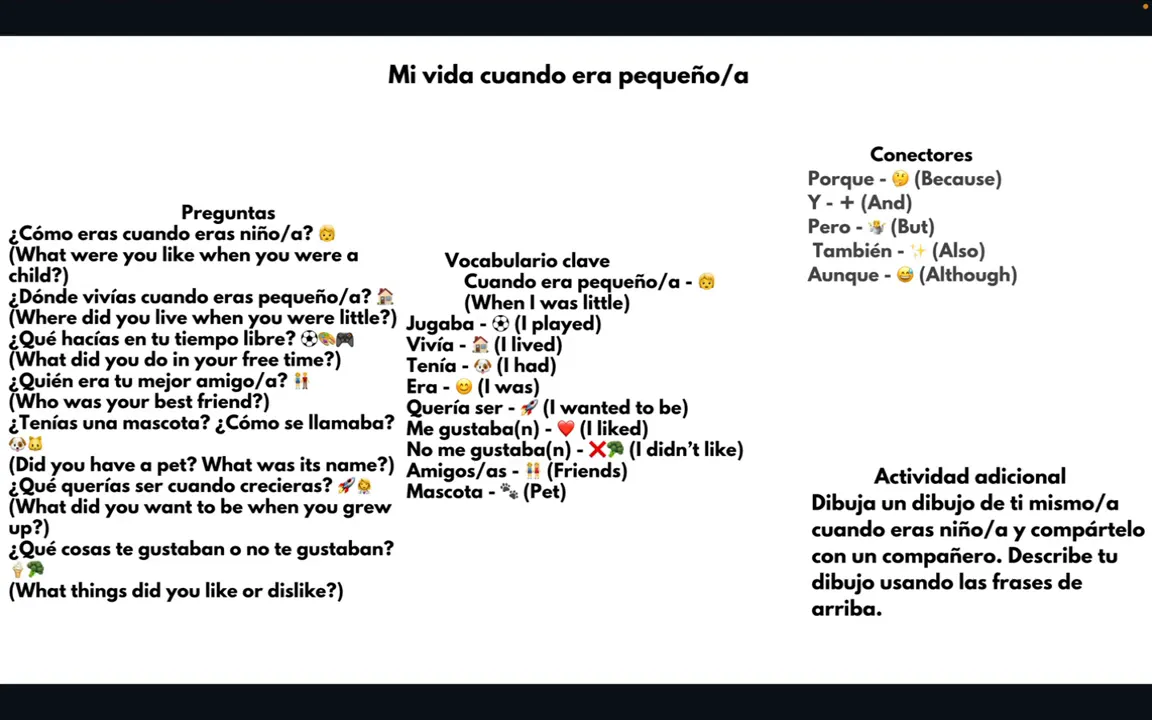
Sample chat mat questions and sentence starters
Here are examples you can copy directly into a chat mat. Provide both English prompts (if needed) and Spanish sentence starters to scaffold production.
Questions
- ¿Cómo eras cuando eras niño/a?
- ¿Qué hacías los fines de semana cuando tenías 10 años?
- ¿Dónde vivías antes?
- ¿Qué comías con frecuencia cuando eras pequeño/a?
- Cuenta una memoria especial de tu infancia.
Answer starters (imperfect and preterite)
- Cuando era niño/a, era muy… / era tímido/a, curioso/a…
- Cuando tenía diez años, jugaba con… / iba a… / veía…
- Antes vivía en… / mi familia vivía en…
- Siempre comía… / A menudo comíamos…
- Una vez, cuando tenía… (pretérito) fui a… / pasó que…
Materials to make your life easier
Provide printable chat mats, teacher models, and quick answer key sheets to scaffold early attempts. These resources save prep time and give students a consistent framework to practise narration in the past. Over time, reduce support so learners produce more independently.
Conclusion
Chat mats are a simple, high-impact activity for teaching narration in the past. Start by modelling, give students guided questions and sentence starters, use them daily as warm-ups, and extend the practice into presentations that compare past and present lives. With a little routine, students will gain confidence using both the imperfect and the preterite in meaningful, personalised ways.
